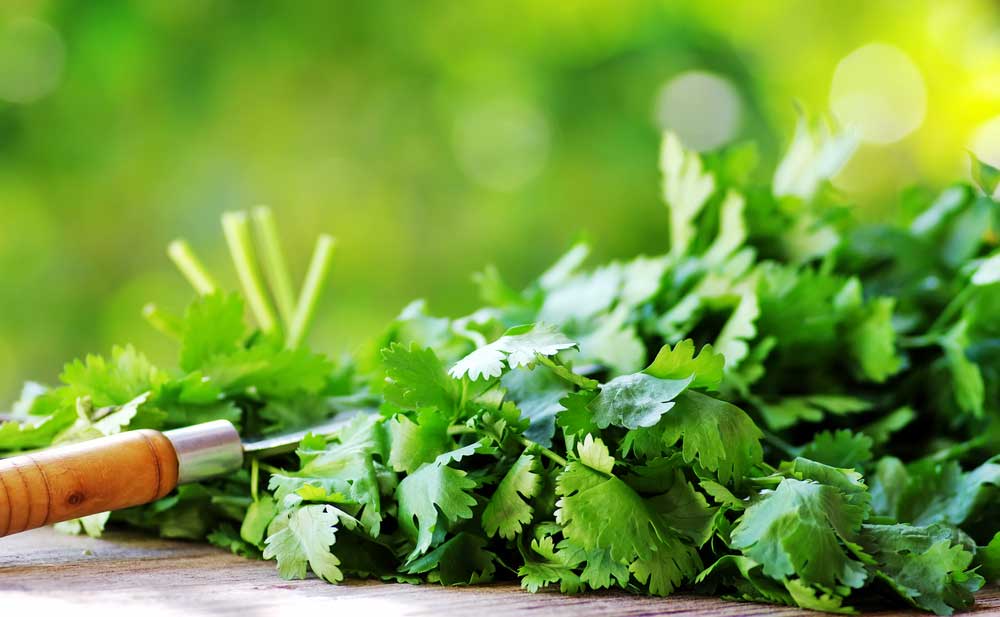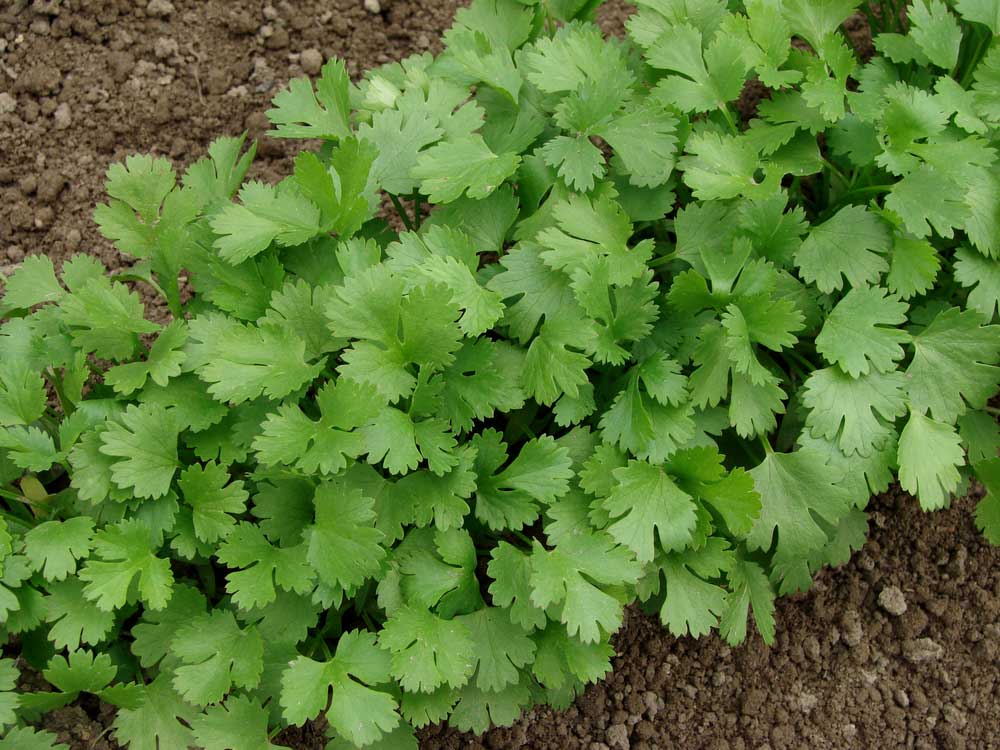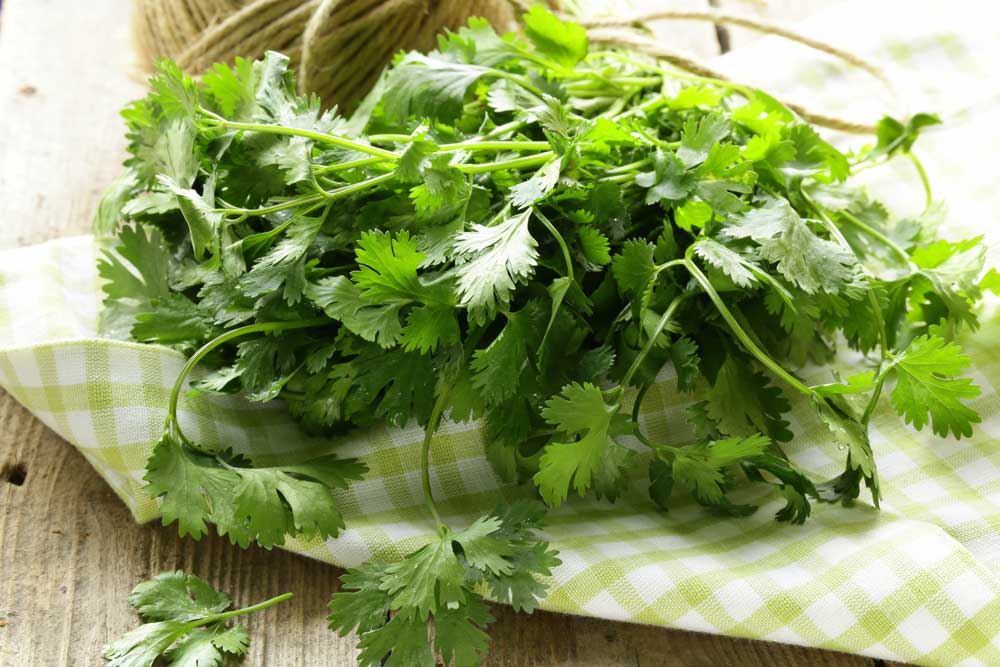Coriander is controversial! There are those who love and those who hate. But if you are on the team of those who love coriander, then join us in this post because today you will finally learn how to plant and care for coriander.
Good right? Then you will get ready to check all the tips.
Characteristics and Uses of Coriander

Coriander can even be confused with parsley, but only at first. Well, just smell it to see the difference.
Both the aroma and the taste of coriander are strong and striking. He is able to steal the show in a preparation, so it is important to know how to balance the amount to be used in each recipe.
Coriander is originally from Asia and also from certain Mediterranean regions. However, Brazil's warm, tropical climate has also become a perfect haven for growing coriander.
And, for these and others, that coriander is widely used in oriental cuisine, in northeastern cuisine and in the preparation of fish and seafood, typical Mediterranean dishes.
Coriander Benefits
Do not underestimate the coriander. It is much more nutritious than you think. The plant, just to give you an idea, has medicinal properties known for a long time by mankind.
The Egyptian people, for example, used coriander to treat stomach, digestive and joint pain problems. The same was true in Greece and ancient Rome.
Coriander has diuretic, stimulating, tonic, refreshing and even aphrodisiac properties.
The plant is also an important source of vitamins C and K, in addition to providing important minerals for the body, such as potassium, iron, manganese, phosphorus and calcium. And like all plant foods, coriander is also rich in fiber.
All these properties of coriander make it a great ally in the health of the liver and intestine, in addition to improving the digestive process.
Coriander is also recognized for its ability to strengthen the immune system, fight anemia, help control bad cholesterol and increase good cholesterol levels, improve memory and even help the body detoxify from heavy metals.
And did you know that coriander also has an anti-inflammatory function? Yeah! This characteristic makes the plant used in mouthwashes and mouthwashes.
How to plant coriander: in the pot, in beds and even in pet bottles

The best way to plant coriander, either in pots or in beds, is through seeds. But what about seedlings, can't you?
Coriander is a type of plant that does not adapt very well to transplantation because it has thin and delicate roots. Therefore, seeds are the most suitable.
Coriander seeds you can buy at garden and agricultural stores, although nowadays it is possible to find vegetable seeds even in supermarkets.
Another option is to harvest the seeds of an adult coriander. In this case, however, you will need to let the seeds dry before planting.
With the seeds in hand, the next step is to prepare the soil. But first, it is worth a tip: it is not necessary to sow the coriander in seedlings, since it should not be replanted, plant it directly in the final location.
The ideal soil for coriander is fertile and well drained (in the case of planting coriander in a pot). Maintain a good drainage system inside the vessel. For this, nothing better than covering the bottom with expanded clay, charcoal or a blanket for gardening.
A good tip is to mix a part of common soil for a part of substrate.
With the pot ready, start by making small dimples about 1.5 cm at most to receive the seeds. Deposit about three seeds in each pit. The distance between one pit and another must be at least 5 cm.
Then, sift a thin layer of soil over the seeds. Enough to cover them lightly, but without burying them.
Keep the pot or bed in a well-lit place with direct sunlight for at least 4 hours a day. On very hot days, protect the vase in a shaded place.
Between 7 and 10 days, the seeds will begin to germinate. About 30 to 40 days later you can pick the first leaves of your cilantro.
The coriander planting process is the same, regardless of the location you choose for it, be it a pot, flower bed or even a pet bottle.
But it is important to mention that the ideal is that the pot or container in which the coriander will be planted is at least 20 to 30 centimeters deep.
Can you plant coriander with root?
Many people arrive from the fair or the supermarket with a bunch of coriander full of roots and end up wondering whether it is possible or not to reuse and plant it.
The answer is yes! However, this method is not always a guarantee of success. Remember that we said that coriander root is delicate, right?
But you can try planting the coriander with root in a pot. To do this, cut the leaves and reserve the base with the root. Then fill a pot with good quality soil, then make a dimple large enough to receive the coriander "seedling".
Fix the plant in the pit, cover with soil and apply light pressure with your fingertips to compact it to the soil.
That done, just water and care for your new coriander. If all goes well, in a few days you will be able to notice the first shoots.
How to care for coriander

Light and temperature
Coriander is a bit queasy when it comes to light and temperature. The plant does not respond well to colder and more humid climates, especially when temperatures are below 18ºC.
During germination, temperatures cannot be below 20ºC, otherwise the seeds will not thrive. Therefore, the most recommended is to plant the coriander in the spring and autumn months.
After "caught", the cilantro resists variations between 18º and 25ºC.
But it doesn’t help if the temperature is adequate for the plant if the light is not good enough.
In addition to enjoying the warmth, the coriander needs to be in direct sunlight for at least 4 hours a day. So, don't try to grow the plant indoors, because it won't go ahead.
A good place to place the coriander pot, if you live in an apartment or in a house without a yard, is on some balcony or suspended from the wall. Incidentally, this is a great opportunity for you to set up a vertical garden at home.
Remembering: the more sunlight the coriander receives, the more intense the flavor and aroma of the plant will be.
Watering
You also need to pay attention to the coriander watering. Too much water is just as bad as too little water.
The ideal is to always observe the soil before offering water to the plant again. Coriander likes slightly moist soil, never dry or soaked.
That is why the importance of always checking the humidity level of the earth beforehand.
Fertilizing
Coriander does not need constant fertilization. You can offer a little organic fertilizer every two or three months, like earthworm humus or chicken manure, for example.
Harvest time
The coriander harvest begins 50 days or so after sowing. When harvesting the leaves, always prefer to cut the tallest ones and let the ones below to develop.
An important tip: do not over harvest the coriander leaves, prefer to cut only those that you will need to use at the moment.
There are two reasons for this. The first is that coriander gradually loses its properties after harvest, in addition to also losing flavor and aroma.
Another problem is that when you remove too many coriander leaves it ends up losing strength and vigor, causing your foot to weaken.
When you notice the presence of the first flowers you can keep them on the foot to harvest the seeds or, even, cut them so that the coriander continues its development.
How to use coriander in cooking
Coriander has a striking flavor and aroma, so it should not be used in large quantities so as not to stand out too much.
You can choose to use either the powdered coriander obtained from the seeds or the fresh coriander.
The aromatic herb combines very well with fish and seafood dishes, both roasted, boiled or stewed.
Coriander also values preparations with vegetables and vegetables, as well as being very welcome raw in salads.
Preparations containing pepper also combine with cilantro.
It is worth mentioning that coriander is perfect when used to flavor vinegars, oils, butters and broths.
Did you write down all the tips? Now just go there and plant your coriander seeds.



